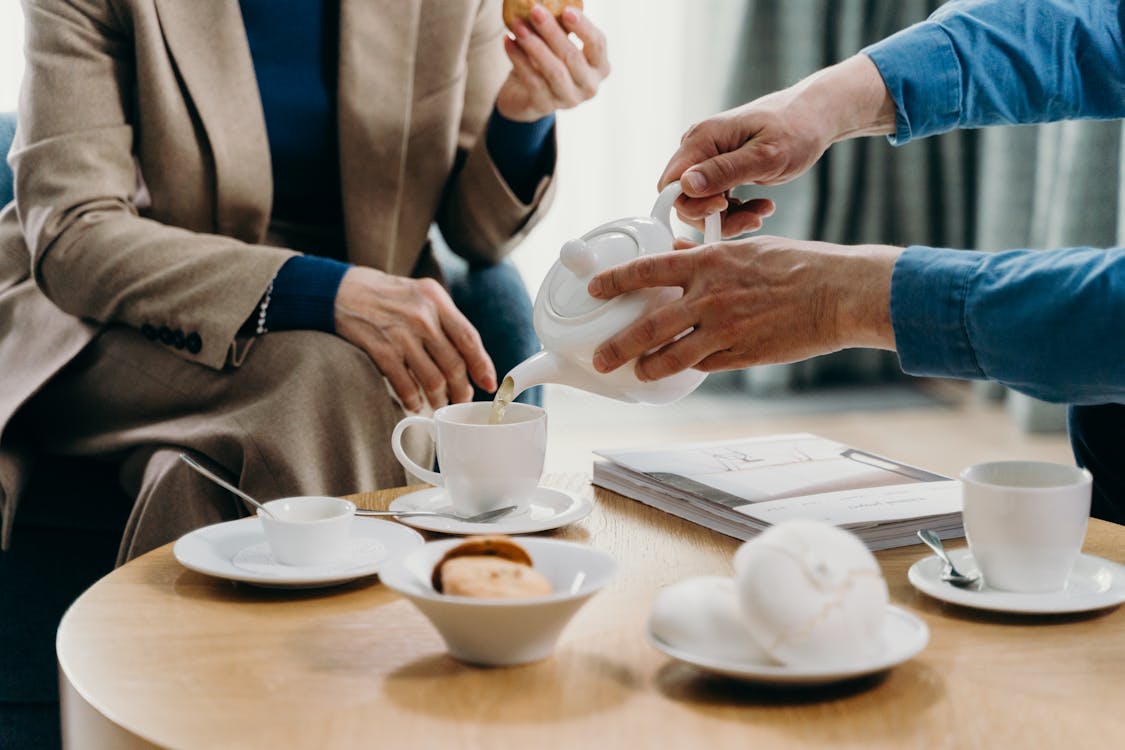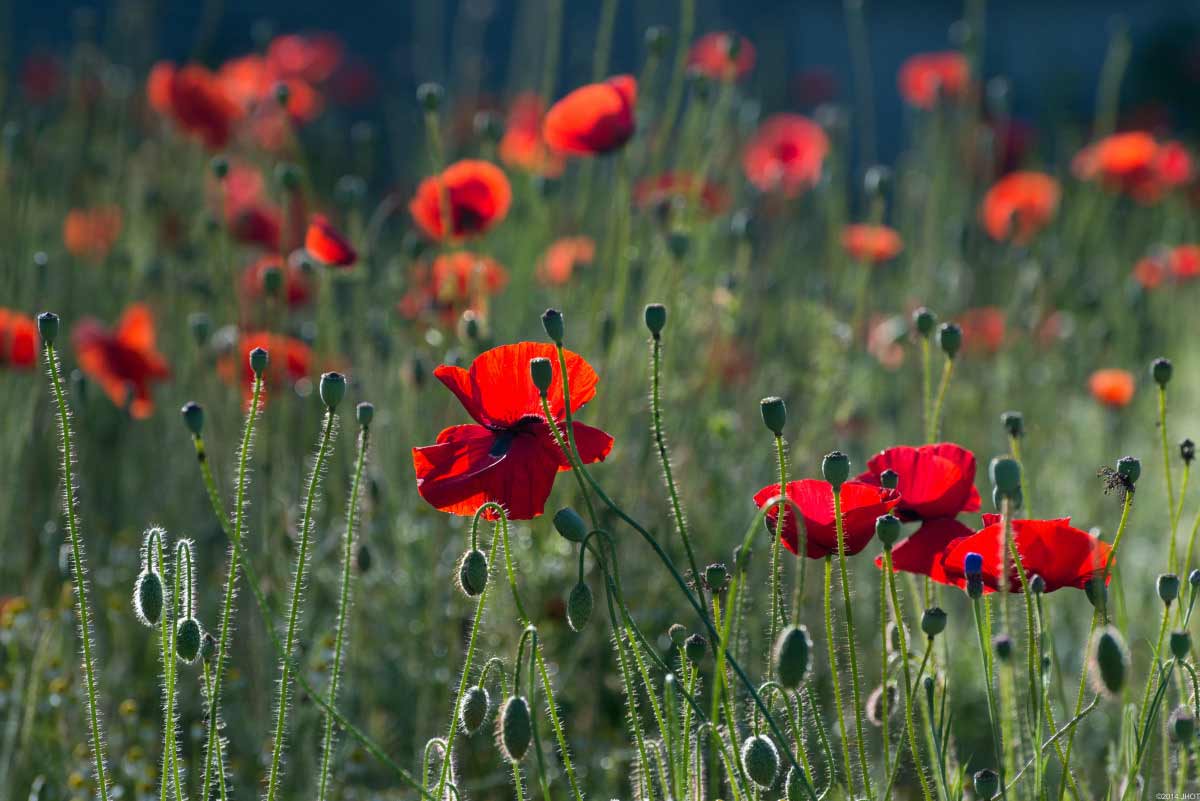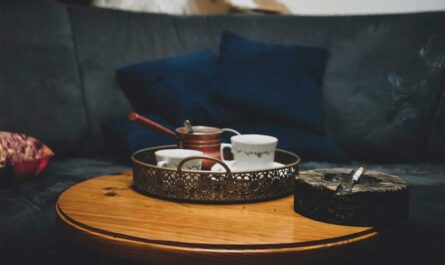Herbal infusions vs. true teas, imagine curling up on a cozy couch on a rainy afternoon, a steaming mug cradled in your hands. The warm aroma fills the air, inviting you to take a sip. But is it tea you’re savoring, or something else entirely? The world of beverages can be surprisingly complex, and the line between “tea” and “herbal infusion” can sometimes be blurry. Fear not, curious tea (or infusion) enthusiast! This article will be your trusty guide, delving into the fascinating world of true teas and herbal infusions, exploring their unique origins, processing methods, and the delightful world of flavors they offer.
A Tale of Two Plants
The key distinction between true teas and herbal infusions lies in their botanical origins. True teas, like black tea, green tea, and oolong tea, all come from a single plant species: Camellia sinensis. This evergreen shrub, native to Southeast Asia, boasts a rich history and is meticulously cultivated to produce the various tea types we know and love. Herbal infusions, on the other hand, are a much more diverse bunch. These delightful beverages are created by steeping various plant parts, such as leaves, flowers, fruits, roots, and even bark, in hot water. From calming chamomile to invigorating peppermint, the world of herbal infusions offers a vast array of flavors and potential health benefits.
Processing Makes Perfect
The processing methods employed also differ between true teas and herbal infusions. True teas undergo a more complex process that significantly impacts their flavor profile. After plucking, the tea leaves may be withered, rolled, oxidized (for black tea and oolong tea), and dried. This meticulous process transforms the fresh leaves into the tea we know, coaxing out a spectrum of flavors and aromas. Herbal infusions, on the other hand, typically involve a simpler process. The chosen plant parts are often dried before being steeped in hot water. While some herbal infusions may involve additional steps like crushing or grinding, the overall process is less involved compared to true teas.
A Symphony of Flavors
The world of flavor is where true teas and herbal infusions truly shine. True teas offer a complex and nuanced taste experience. Black tea boasts a bold and robust character, while green tea delights with its vegetal and grassy notes. Oolong tea occupies a middle ground, offering a spectrum of flavors depending on the processing method. Herbal infusions, on the other hand, present a kaleidoscope of taste sensations. Chamomile offers a calming and floral experience, while ginger tea packs a spicy punch. Peppermint tea invigorates with its minty freshness, and hibiscus tea tantalizes with its tart and fruity notes. The possibilities are truly endless!
Potential Health Benefits
Both true teas and herbal infusions have been associated with various potential health benefits for centuries. True teas are a natural source of antioxidants, which may help protect cells from damage. Black tea is known for its stimulating properties due to the presence of caffeine, while green tea offers a gentler pick-me-up along with potential health benefits related to weight management. Herbal infusions, too, boast a range of potential benefits.
Chamomile is traditionally used to promote relaxation and sleep, while ginger tea may help soothe nausea. Peppermint tea may aid in digestion, and hibiscus tea is sometimes used for its blood pressure-lowering properties. It’s important to remember that the science behind these potential benefits is ongoing, and consulting a healthcare professional is always recommended before using herbal infusions for medicinal purposes.
Demystifying the Terminology: True Teas vs. Herbal Infusions
Have you ever wondered if that calming cup of chamomile tea is truly “tea”? The answer, like many things in life, is a little more nuanced than a simple yes or no. This section will shed light on the fascinating world of beverages, differentiating between true teas and herbal infusions, and clearing up any confusion surrounding these delightful options.
True Teas: A Botanical Story
When it comes to true teas, the story begins with a single plant: Camellia sinensis. This evergreen shrub, native to Southeast Asia, has been cultivated for millennia, gracing teacups around the world. True teas are exclusively derived from the leaves of the Camellia sinensis plant, but the magic doesn’t stop there. The processing methods employed unlock a captivating spectrum of flavors, giving rise to the four main types of true tea we know and love:
-
White Tea: The most minimally processed of all true teas, white tea boasts a delicate and slightly sweet flavor profile. Imagine the young, silvery-white buds and leaves of the Camellia sinensis plant gently withered and dried, preserving their natural freshness.
-
Green Tea: Green tea undergoes a slightly more involved process compared to white tea, yet it still retains a significant amount of its natural character. The leaves are typically withered, pan-fired, or steamed to halt oxidation, and then dried. The result is a tea brimming with freshness, offering vegetal and grassy notes.
-
Oolong Tea: Oolong tea occupies a fascinating middle ground between green tea and black tea. The leaves undergo partial oxidation, creating a spectrum of flavors that range from floral and grassy notes (similar to green tea) to toasty and fruity characteristics (closer to black tea). The degree of oxidation determines the specific type of oolong tea you’re enjoying.
-
Black Tea: Black tea undergoes the most extensive processing method among true teas. The leaves are withered, rolled, and fully oxidized, resulting in a robust and full-bodied flavor profile with notes of malt, chocolate, and spice. Think of black tea as the bold and assertive cousin of green tea.
Herbal Infusions: A Celebration of Plants
The world of herbal infusions is a vibrant tapestry woven from a diverse array of plants. Unlike true teas, which are derived solely from the Camellia sinensis plant, herbal infusions are created by steeping various plant parts in hot water. These plant parts can include leaves, flowers, fruits, roots, and even bark, opening up a world of possibilities when it comes to flavor and potential health benefits. Imagine a steaming mug filled with a fragrant infusion made from calming chamomile flowers, invigorating peppermint leaves, or tart and tangy hibiscus petals – the combinations are truly endless!
The “Tea” Misnomer: A Historical and Cultural Journey
The term “tea” can sometimes be a bit misleading, especially when it comes to herbal infusions. So, why are these beverages often called “teas” even though they lack the botanical connection to Camellia sinensis? The answer lies in a rich history and cultural exchange. Early trade routes introduced true teas from Asia to other parts of the world. As these beverages gained popularity, people in various cultures began steeping other plants in hot water, seeking similar comforting and potentially beneficial effects. Over time, these herbal infusions became known as “teas” due to their shared brewing method and the warmth and comfort they provided. The term stuck, and today, we have a delightful world of both true teas and herbal infusions to explore and enjoy.
A World of Leaves: Exploring Botanical Origins
The captivating world of tea and herbal infusions begins with a journey into the plant kingdom. Here, we’ll unveil the fascinating botanical origins of these delightful beverages, exploring the unique plants that give them their distinctive flavors and characteristics.
The Mighty Camellia sinensis: A Foundation for True Teas
The cornerstone of the true tea world is the Camellia sinensis plant, an evergreen shrub native to Southeast Asia. Don’t be fooled by its seemingly ordinary appearance – this unassuming plant boasts a rich history and remarkable versatility. Camellia sinensis exists in numerous varieties, each with subtle genetic differences that influence the final flavor profile of the tea. Think of it like a talented artist with a diverse palette – the same plant can be coaxed into producing a spectrum of flavors depending on the processing methods employed.
A Global Journey: The cultivation of Camellia sinensis has spread far beyond its Southeast Asian origins. Today, vast tea plantations flourish in countries like China, India, Sri Lanka, Japan, and Kenya, each with unique growing conditions and cultivation practices. These variations in climate, soil composition, and even the meticulous care bestowed upon the tea plants contribute to the incredible diversity of true teas we enjoy today. For instance, teas grown at high altitudes tend to be more delicate and nuanced in flavor, while those cultivated in lower regions often offer bolder and more robust characters.
Unveiling the Varieties: Within the Camellia sinensis family, two main varieties play a pivotal role: Camellia sinensis var. sinensis and Camellia sinensis var. assamica. The sinensis variety, native to China, produces the leaves used for green, white, and yellow teas. These teas are known for their lighter body and delicate flavors. On the other hand, the assamica variety, originating in Assam, India, boasts larger leaves that are typically used for black tea production. These leaves have the potential for a bolder and more robust flavor profile due to their higher concentration of polyphenols, the natural compounds that contribute to tea’s astringency and health benefits.
A World of Possibilities: By understanding the Camellia sinensis plant and its diverse varieties, we gain a deeper appreciation for the intricate world of true teas. From the delicate elegance of green tea to the robust character of black tea, each cup tells a story – a story of meticulous cultivation, processing techniques, and the unique characteristics of the Camellia sinensis plant itself.
Processing Power: From Plant to Cup
The journey from a humble tea leaf to a steaming cup of tea is an intricate dance between nature and human ingenuity. This section will delve into the fascinating world of tea processing, exploring the methods that transform the leaves of the Camellia sinensis plant into the diverse true teas we know and love. We’ll also contrast this with the simpler approach used in creating herbal infusions.
The Art of Processing True Teas: A Symphony of Technique
The meticulous processing methods employed for true teas significantly impact their flavor profile, caffeine content, and overall character. Imagine a skilled artist wielding various tools to create a masterpiece – in this case, the “tools” are the processing techniques, and the “masterpiece” is the finished tea with its unique taste and aroma. Let’s explore the key steps involved:
-
Withering: Freshly plucked tea leaves are spread out on mats or mesh trays in well-ventilated areas. This initial stage allows the leaves to lose some moisture, making them pliable for further processing. Think of it as the leaves taking a deep breath, preparing for the transformation ahead
-
Rolling or Bruising: Depending on the desired tea type, the leaves may be rolled or bruised. This process disrupts the cell walls of the leaves, initiating the enzymatic oxidation process that plays a crucial role in developing flavor. Imagine gently massaging the leaves to awaken their hidden potential.
-
Oxidation: This is the defining step for some true teas, particularly black tea. The rolled or bruised leaves are spread out in a cool, humid environment, allowing them to interact with oxygen. As oxidation progresses, the leaves darken in color, and their flavor profile evolves from grassy to malty, brisk, and full-bodied. Think of it as magic – the leaves slowly transform, revealing their rich and complex character. Green tea, on the other hand, undergoes minimal to no oxidation, preserving its fresh and vegetal notes.
-
Fixing (Heat Treatment): To halt the oxidation process at the desired level, the leaves undergo a brief pan-firing or steaming process. This “fixing” step ensures the tea retains its distinct flavor profile. Imagine pressing pause on the leaves’ transformation, capturing the perfect balance of flavors.
-
Drying: The final stage involves drying the leaves using warm air or gentle baking. This process removes any remaining moisture and creates the characteristic dry and brittle texture of tea leaves we’re familiar with. Think of it as the final polish on the masterpiece, preparing the tea for brewing and enjoyment.
By understanding these processing techniques, you gain a deeper appreciation for the craftsmanship that goes into each cup of true tea. The meticulous attention to detail, from withering to drying, shapes the final character of the tea, offering a spectrum of flavors and aromas to tantalize your taste buds.
The Simplicity of Herbal Infusions: Unveiling the Essence
Herbal infusions celebrate a more straightforward approach to creating delightful beverages. Unlike true teas, which undergo a multi-step processing method, herbal infusions involve a simple steeping process. The chosen plant parts, such as leaves, flowers, fruits, roots, or even bark, are typically dried before being steeped in hot water. This gentle extraction process unlocks the flavor and potential health benefits of the botanicals used.
The Art of Steeping: While seemingly simple, the steeping process for herbal infusions plays a crucial role in extracting the desired flavors and properties. The ideal steeping time and water temperature can vary depending on the specific plant material being used. Generally, delicate herbs like chamomile benefit from shorter steeping times (around 3-5 minutes) and cooler water temperatures (around 175°F – 185°F). More robust plant parts, like ginger root, can withstand longer steeping times (up to 10 minutes) and hotter water (around 195°F – 205°F). Experimentation is key! By adjusting the steeping time and water temperature, you can tailor the strength and flavor profile of your herbal infusion to your personal preference.
A Celebration of Freshness: Since herbal infusions typically involve minimal processing, they often retain a higher concentration of the volatile compounds found in the plant material. This translates to a more vibrant and fresh flavor profile compared to true teas. Herbal infusions are also a wonderful way to explore the unique taste and aroma profiles of various plants, offering a delightful and diverse journey for the senses.
A Botanical Bounty: The World of Herbal Infusions
While true teas stem from a single plant, the world of herbal infusions celebrates a vibrant tapestry of botanicals. These delightful beverages are crafted by steeping various plant parts, such as leaves, flowers, fruits, roots, and even bark, in hot water. The resulting concoctions offer a kaleidoscope of flavors, aromas, and potential health benefits, making them a captivating addition to any beverage repertoire.
A Treasury of Herbs: Let’s embark on a whirlwind tour of some popular plants used in herbal infusions:
- Chamomile: This delicate flower boasts a calming and floral aroma, traditionally used to promote relaxation and sleep.
- Peppermint: The invigorating aroma and minty taste of peppermint leaves make them a popular choice for aiding digestion and freshening breath.
- Ginger: This versatile root offers a spicy kick and is often used to soothe nausea and support healthy digestion.
- Hibiscus: The vibrant red blooms of hibiscus are steeped to create a tart and tangy infusion, sometimes used for its potential blood pressure-lowering properties.
Beyond the Familiar: This is just a glimpse into the vast array of plants used in herbal infusions. From the soothing properties of lavender to the invigorating citrus notes of lemongrass, the possibilities are truly endless. Adventurous tea enthusiasts can explore the world of rooibos (an African shrub with a naturally sweet and earthy flavor), echinacea (known for its potential immune-boosting properties), or elderflower (offering a delicate floral aroma).
A Celebration of Diversity: The beauty of herbal infusions lies in their boundless creativity. You can create custom blends using your favorite herbs, fruits, and spices, tailoring the flavor profile and potential health benefits to your specific needs and preferences. Whether you seek a calming evening ritual or a refreshing afternoon pick-me-up, the world of herbal infusions offers a delightful and diverse exploration.
A Spectrum of Flavors: Unveiling the Sensory Experience
The world of tea and herbal infusions is a captivating playground for the senses. Each cup offers a unique symphony of flavors and aromas, waiting to be explored. Let’s embark on a journey through the diverse flavor profiles of true teas and herbal infusions, and discover the delightful possibilities that await.
True Teas: From Delicate to Bold: A Symphony of Taste
True teas, with their meticulously crafted processing methods, offer a captivating spectrum of flavors. Imagine a musician wielding a diverse range of instruments – in this case, the “instruments” are the processing techniques, and the “symphony” is the finished tea with its unique flavor profile. Let’s explore some of the key players:
-
Green Tea: The unassuming green tea boasts a delicate and vegetal character. Think of freshly cut grass with hints of sweetness and a subtle astringency. Green tea’s minimal processing allows its natural freshness to shine through, making it a perfect choice for those who enjoy a lighter and more nuanced tea experience.
-
White Tea: Even less processed than green tea, white tea offers a delicate and slightly sweet flavor profile with subtle floral notes. Imagine the essence of springtime captured in a cup, perfect for those seeking a truly refined tea experience.
-
Black Tea: Black tea, with its bold and robust character, stands in stark contrast to green tea. The full oxidation process unlocks a world of malty, caramel, and sometimes even chocolatey notes. Black tea can be brisk and invigorating or smooth and comforting, depending on the specific type and brewing method.
-
Oolong Tea: Oolong tea occupies a fascinating middle ground between green and black tea. The degree of oxidation for oolong teas varies, resulting in a spectrum of flavors ranging from light and floral to toasty and complex. Oolong tea offers a truly unique journey for the taste buds, perfect for adventurous tea enthusiasts.
Beyond the Basics: These are just a few examples of the diverse flavor profiles true teas offer. From the smoky notes of lapsang souchong to the nutty character of roasted oolong teas, there’s a world of flavors waiting to be explored. Experimenting with different types of true teas and brewing methods allows you to discover your perfect cup, tailored to your taste preferences and desired level of boldness.

Herbal Infusions: A Symphony of Botanical Notes
Herbal infusions celebrate a vibrant tapestry of flavors that transcend the traditional “tea” experience. Unlike true teas, which primarily offer variations on a vegetal theme, herbal infusions showcase the unique taste and aroma profiles of various plants. Imagine an artist’s palette overflowing with vibrant colors – in this case, the “colors” are the diverse plants used, and the “painting” is the delightful and multi-layered flavor profile of the herbal infusion.
-
Floral Notes: Chamomile and lavender infusions offer calming and delicate floral aromas, while rosehip tea boasts a slightly sweeter and more complex floral character.
-
Herbal Notes: Peppermint tea bursts with a refreshing and invigorating minty flavor, while rosemary infusions offer a more herbaceous and slightly peppery taste.
-
Spicy Notes: Ginger tea packs a warming and spicy punch, while cinnamon infusions offer a sweet and comforting spiciness.
-
Fruity Notes: Hibiscus tea tantalizes with its tart and tangy cranberry-like notes, while apple and berry infusions offer a delightful and refreshing sweetness.
-
Earthy Notes: Rooibos tea boasts a naturally sweet and earthy flavor profile, while dandelion root tea offers a slightly bitter and earthy taste.
Endless Combinations: This is just a glimpse into the vast array of flavors found in herbal infusions. The beauty lies in the ability to create custom blends using your favorite herbs, fruits, and spices. Imagine combining calming chamomile with invigorating peppermint or pairing the sweetness of dried apple slices with the warming spice of cinnamon. The possibilities are truly endless, allowing you to tailor the flavor profile and potential health benefits of your herbal infusion to your specific needs and preferences.
The Power of Blending: A Symphony of Flavor and Function
The art of blending takes herbal infusions to a whole new level. By combining various herbs, spices, and even dried fruits, you can create unique flavor profiles and potentially enhance the health benefits of your infusion.
Flavorful Fusion: Imagine crafting a soothing evening blend with chamomile, lavender, and a touch of lemon balm for ultimate relaxation. Or, create a refreshing afternoon pick-me-up by combining invigorating peppermint with the uplifting citrus notes of lemongrass. The possibilities are endless, allowing you to explore your creativity and concoct delightful flavor combinations.
Synergy in the Cup: Beyond taste, blending herbs can also offer potential health benefits. Certain herbs may possess complementary properties that work synergistically when combined in an infusion. For instance, ginger, known for its digestive properties, can be blended with lemon balm, which may help soothe nausea, creating an infusion that offers double the digestive support. Remember, it’s always wise to consult a healthcare professional before using herbal infusions for medicinal purposes, especially if you have any underlying health conditions or are taking medications.
Finding Your Perfect Blend: Exploring the world of herbal infusion blends can be a delightful adventure. Many reputable tea companies offer pre-blended infusions designed for specific purposes, such as relaxation, sleep support, or digestion. These blends can be a great starting point for curious tea enthusiasts. However, the true magic lies in creating your custom blends. Experiment with different herbs, spices, and even dried fruits, guided by your taste preferences and desired health goals. Keep track of your creations and document the flavor profiles and potential benefits of each blend. As you experiment, you’ll discover a world of personalized herbal infusions, tailored to your unique needs and preferences.
In conclusion, the world of tea and herbal infusions offers a captivating journey for the senses. True teas, with their diverse processing methods, present a spectrum of flavors, from the delicate vegetal notes of green tea to the robust malty character of black tea. Herbal infusions, on the other hand, celebrate a vibrant tapestry of flavors derived from various plants, offering floral, herbal, spicy, fruity, and even earthy notes. The art of blending allows you to create unique flavor profiles and potentially enhance the health benefits of herbal infusions. So, embark on your tea adventure, explore the diverse flavors, experiment with blends, and discover the perfect cup that awakens your senses and delights your taste buds.
Beyond the Cup: Cultural Significance and Rituals
The captivating world of tea and herbal infusions transcends the simple act of brewing and sipping. For centuries, these beverages have been woven into the fabric of cultures around the globe, serving as a cornerstone for social gatherings, traditional practices, and moments of mindfulness. Let’s embark on a journey beyond the cup, exploring the rich cultural significance and rituals associated with both true teas and herbal infusions.
True Teas: A Global Tradition Steeped in History
True teas boast a rich and storied history, deeply embedded in the social fabric of various cultures. From the elegant tea ceremonies of Japan to the bustling tea stalls of India, true tea has served as a social lubricant, a facilitator of conversation, and a symbol of hospitality for centuries.
-
The Art of the Japanese Tea Ceremony: Steeped in tradition and mindfulness, the Japanese tea ceremony is a meditative practice that elevates the act of tea drinking into an art form. Every detail, from the preparation of the tea to the specific movements involved, is imbued with symbolism and reverence.
-
British Afternoon Tea: A quintessential symbol of British culture, afternoon tea is a delightful social ritual. Imagine tiered plates overflowing with delicate finger sandwiches, scones slathered with clotted cream and jam, and an assortment of sweet pastries – all paired with a steaming cup of tea. This delightful tradition offers a moment of respite and social connection amid a busy day.
-
China’s Tea Culture: China, the birthplace of tea, boasts a rich and diverse tea culture. From the delicate art of brewing green tea to the communal experience of sharing tea in teahouses, tea plays a significant role in Chinese social life and traditional celebrations.
A World of Traditions: These are just a few examples of the diverse cultural significance surrounding true teas. From the high tea traditions of Europe to the communal tea gatherings in Morocco, each culture has woven its unique customs and rituals around this beloved beverage.
Herbal Infusions: Rooted in Tradition and Wellness Practices
Herbal infusions have a long and fascinating history, deeply intertwined with traditional medicine and holistic wellness practices around the world. These delightful beverages were not merely enjoyed for their taste, but also valued for their potential health benefits.
-
Ancient Remedies: For centuries, various cultures have utilized herbal infusions for medicinal purposes. From chamomile tea used to promote relaxation and sleep to ginger tea known for its ability to soothe nausea, herbal infusions have served as a natural approach to wellness.
-
Ayurveda and Herbal Infusions: In the ancient Indian system of holistic medicine, Ayurveda, herbal infusions play a crucial role. Specific herbs are chosen based on their individual properties and their potential to balance the doshas (energetic forces) within the body.
-
Global Infusion Traditions: From the use of peppermint tea for digestive support in Europe to hibiscus tea valued for its potential blood pressure-lowering properties in West Africa, herbal infusions offer a glimpse into the diverse traditional wellness practices around the world.
A Celebration of Wellbeing: The cultural significance of herbal infusions extends beyond their medicinal uses. In many cultures, these beverages are enjoyed as a way to connect with nature, promote relaxation, and foster a sense of well-being. Sharing a cup of herbal tea with loved ones can be a simple yet powerful way to connect and unwind. Tea, Coffee, Energy Drinks, Juice, Beverage, Smoothie, and more
Creating Your Own Ritual: A Cup of Mindfulness
The beauty of tea and herbal infusions lies not just in their taste and potential health benefits, but also in the opportunity to create your rituals. Imagine carving out a quiet space in your day, brewing a cup of your favorite tea (true tea or herbal infusion!), and allowing yourself to simply be present in the moment. Here are some ideas to inspire you:
-
Morning Mindfulness: Start your day with a gentle cup of green tea and a few moments of quiet reflection, setting your intentions for the day ahead.
-
Afternoon Escape: In a busy day, take a break for a cup of calming chamomile tea and some deep breaths, allowing yourself to de-stress and recharge.
-
Evening Ritual: Wind down before bed with a soothing cup of lavender tea and a good book, creating a relaxing bedtime routine.
A Journey of Discovery: The possibilities are endless! Experiment with different true teas and herbal infusions, discover the flavors and rituals that resonate with you and create your own tea-drinking experience. Let each cup be a moment of mindfulness, a celebration of taste, and a journey of self-discovery.
Final thought: A World of Choice
The world of beverages offers a delightful exploration of taste and potential health benefits. True teas, with their complex processing methods and rich history, provide a spectrum of flavors from robust and invigorating to light and refreshing. Herbal infusions, on the other hand, offer a boundless playground of flavors and potential wellness properties, catering to a wide range of personal preferences.
Celebrating Diversity
There’s no single “winner” in the tea versus herbal infusion debate. Both categories offer unique advantages. True teas can be a source of focus and energy, while herbal infusions can promote relaxation and provide a soothing escape. Ultimately, the best choice comes down to your personal preferences and what you hope to achieve with your cup. Fitness – Meditation – Diet – Weight Loss – Healthy Living – Yoga
Finding Your Perfect Cup
Embrace the journey of discovery! Experiment with different true teas, exploring the world of black teas, green teas, oolong teas, and white teas. Each type offers a unique flavor profile waiting to be explored. Delve into the world of herbal infusions, steeping a calming cup of chamomile before bed or enjoying a refreshing glass of iced hibiscus tea on a hot summer day. Don’t be afraid to mix and match – a touch of honey can enhance the sweetness of a green tea, while a slice of lemon can add a zesty touch to a black tea. The possibilities are endless!
A Journey of Discovery
The world of tea and herbal infusions is an invitation to explore, relax, and savor the moment. So, grab your favorite mug, boil the kettle, and embark on a delightful adventure. Whether you choose a classic black tea or a soothing cup of chamomile, there’s a perfect cup waiting to be discovered, brimming with flavor and potential health benefits. Let your taste buds be your guide, and enjoy the journey!
Other Interesting Articles
- 20 Proven Health Benefits of Drinking Tea Before Having Sex
- 22 Proven Health Benefits of Drinking Tea Before Bedtime
- 21 Proven Health Benefits of Drinking Black Tea with Milk
- 21 Health Benefits of Scottish Afternoon Tea, Side Effects
- 20 Health Benefits of Assam Tea: Recipe, Side Effects
- 22 Health Benefits of English Breakfast Tea, Side Effects
- 18 Health Benefits of Darjeeling First Flush Tea, Side Effects
- 21 Health Benefits of Chinese Black Tea: Recipe, Side Effects
- 20 Health Benefits of Duchess Grey Black Tea, Side Effects
- 21 Proven Health Benefits of Drinking Tea in Kulhad (Kulhar)
- 20 Proven Health Benefits of Drinking Tea while Pregnant
- 22 Health Benefits of Drinking Green Tea After Workout
- 24 Health Benefits of Drinking Chamomile Tea in the Morning
- 21 Proven Health Benefits of Drinking Tea Instead of Coffee
- Drinking Milk Tea in the Morning On an Empty Stomach: Pros, Cons
- 21 Proven Health Benefits of Drinking Black Tea in the Morning
- 21 Hidden Disadvantages of Drinking Excessive Tea At Night
- 22 Silent Disadvantages of Drinking Tea After Meals
- 20 Benefits of Drinking Green Tea in the Morning Empty Stomach
- 50 Most Popular Types of Non-Alcoholic Beverages & Drinks



